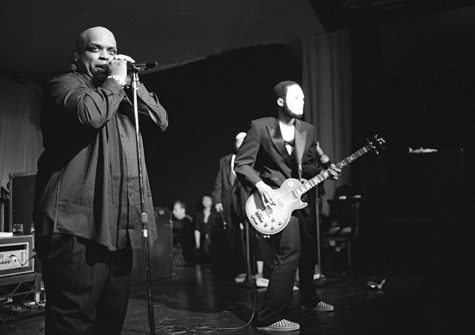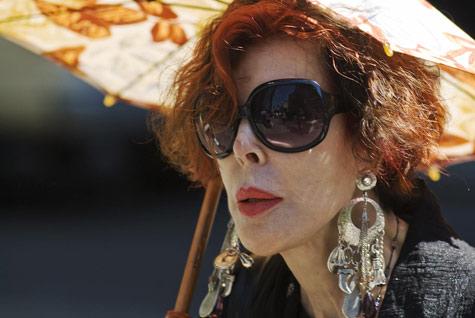Chris Weeks is a freelance editorial photographer who shoots for the major domestic and international weeklies and monthlies. He uses his commercial work to support his ongoing street photography around the world. Chris personally prefers location over studio shoots, and his candid images reflect his eye for the more unusual shot - something he brings to all his work, including photographing celebrity events.
Though Leland had only a moment to capture them, the photographs suspend these women in time so that we may examine our own thoughts about how they might live their lives, and about how people perceive themselves. As viewers we also have the opportunity to delve into what the photographer sees in ways we otherwise wouldn't be able to had the photographer not captured the image - examine the evidence of the 'work' done on these women, and to see the reflections of the rest of us.
"When I'm on the street shooting this kind of work I feel what I imagine a hunter must feel like. There is a sense of stalking prey. The first thing I do is a find a street that is bathed in sunlight. I then find myself an inconspicuous spot on the street, often up against a building or a light pole, scoping out the people walking towards me from at least a half a block away. When I see a subject of interest I move out into the swirl of people on the sidewalk and start to track the person walking towards me in continuous auto-focus mode with an 80-200 zoom lens zooming in as the subject approaches and then zooming out as the person becomes very close to me. I can usually lose myself in the crowded street so that the person I'm shooting has no idea of what I'm doing until they are within 6 - 10 feet, and often not even then. Because I'm shooting so tight I'm only able to get off about 3 shots at the most before the person is by me. Not very controlled, but that's what makes it challenging and exciting." - Leland Bobbé
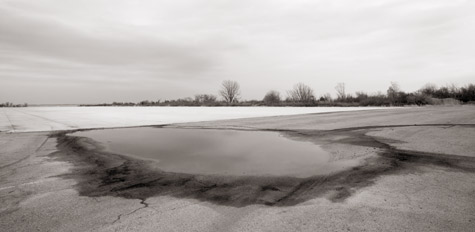
Unexpected Landscapes of New York City.
"I've always just loved to explore the city, especially the shorelines of New York City and the outer boroughs. The project started in late fall of 2003 out at the Rockaways, when I was wandering around in Riis Park. I came across a collection of sand piles and berms that had been created in order to prevent beach erosion. There was a mysterious and ethereal quality to the landscape--the antithesis of traditional urban New York landscapes. The combination of those elements resonated with me, and I decided to explore unexpected landscapes within the confines of New York City.
Presented here are the shifting sands that take form and then disappear into the surf at Riis Park in Queens; floodwaters at Orchard Beach's parking lot in the Bronx; oil stains and standing water mix on an abandoned runway in Brooklyn; canine and human footprints vanish on a berm on Staten Island's South Beach - images that are testament to the transient and mysterious borders of New York City." - Bruce Katz
The prints have to be seen in person so I'll update this entry when Bruce has a show.
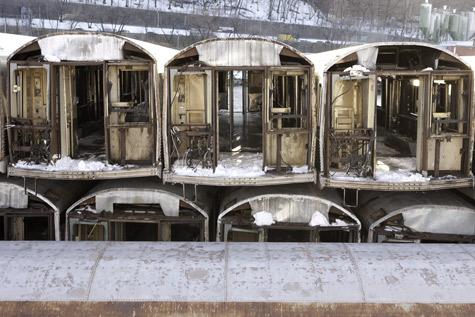 Stephen Mallon
Stephen Mallon is a commercial and fine art photographer. Lately, he has become interested in "the secret worlds of salvage", photographing the recycling industry; for example, rubber processing plants, methane reclamation, incinerators, and the U.S.S. New York which is crafted from steel salvaged from the World Trade Center site.
In 2006, Steve met Jayne Rockmill at an
ASMP NY portfolio review. Jayne liked the industrial landscape photographs that Steve had been making for both commercial and personal work and suggested he publish a book, but Steve felt he wanted a better body of work if he were to do so. He got to thinking about the recycling industry, found a scrap company in New Jersey and got access for a couple of days to scout and shoot.
An art buyer suggested he include people in his industrial landscapes if the work were to have a broader appeal to advertisers, and it was during such a shoot in New Jersey that Steve spotted a large parked barge. Weeks Marine, the company contracted by the Metropolitan Transit Authority of New York, became a fan and client. After harvesting their parts, empty subway cars are lifted away to make room for new ones, and Weeks Marine uses ocean-going cranes to take them to other states where they're dumped off-shore to create reefs for the fishing and tourist industries as part of the National Artificial Reef Plan.
These images represent Steve's second solo show at
Front Room Gallery. The exhibition entitled "Next Stop - Atlantic" opens September 10th 2010. Limited editions are available at
20x30, 30x45, and 40x60 with 5 prints in each.
View the feature.
Buy the book.
Subway cars © Stephen Mallon
What no Flash? Really? Come on photographers, make some noise, like
bigflannel is doing:
"I am an award winning photography and magazine website designer (Webby, PDN, Communication Arts). I am personally invested in Flash because it is the best solution for providing media rich websites. I don't mean video, I mean combinations of media, multimedia in fact -on the same canvas (video, images, text). This is what an online magazine will be. This is what the web offers over print. Mixed media, beautifully laid out and ready to share.
I have been watching the iPad and its development for some time. It's clear it is an important device for the publishing industry. There are arguments for and against its value etc., but it is important.
To the moment and a call to action. The iPad does not support Flash. Aside from my personal investment in it running Flash (all my client websites, my 10 years of experience etc.) I think all photographers should be invested in making the Apple iPad run Flash.
HTML5 does not offer the same level of support for building multimedia websites as Flash. Apple are not telling the truth regards its ability to fulfill what flash does (and focusing more on its use as video player than a multimedia canvas). HTML5 supports media as a plugin to a word led, structured and dominated page. The New York Times pronounces professional photography is dead (how long until professional journalism is dead?). I once commented on
A Photo Editor about the fact that an image is not even worth a word (let alone a 1000) in the world of search engines and potentially is spam and malicious. A Photo Folio, Live Books and every decent photographer website is built in Flash. Every beautiful website where photography forms the backbone of the site structure is built in Flash.
Photographers need to be howling at Apple. Apple are reducing the importance of images and media, dumbing down users, allying themselves to a world where words are more important than images. Not withstanding the fact that virtually every photographer is going to have to redo their website (an unnecessary cost). Apple are doing this to support their video format, not because flash is inherently bad (it is not perfect, but not perfect does most people very well - Windows for example). The issue is not Flash, the issue is Apple, its video format, and iTunes store revenue stream. Photographers have supported Apple by using their hardware with Adobe software long before the iPod, iPad or any mainstream product came from them. Apple are returning the favor by fucking Adobe and photographers with a heavy stick to promote their own video format, iTunes revenue and profit. Why are photographers so quiet?" - Mike Hartley,
bigflannel web design.

The majority of Karsh's portraits are in portrait format, but I wanted to find some landscapes to take advantage of the full screen magazine. Here you see Jean-Paul Riopelle, Max Ernst, Ravi Shankar, Helen Keller and Polly Thompson, Marc Chagall, Pablo Picasso, Bertrand Russell, and Frank Lloyd Wright. Each is photographed in Karsh's signature style in a recognizable environment, except for Lord Russell, who is beautifully framed in silhouette lighting his pipe with a match.
There is plenty more to enjoy on Karsh's official website. Don't miss the
videos, in particular the recreation of the world famous Churchill "Roaring Lion" photograph.
View the feature.
Frank Lloyd Wright, 1954 © Yousuf Karsh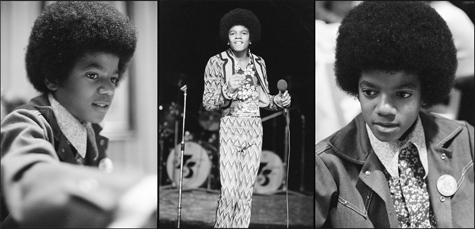
Passionate about music from a young age,
Michael Putland's career in the music industry began as he thought it was about to end - closing down his studio because he simply couldn't afford it, the last call to come in was an assignment to photograph Mick Jagger. 30 years later he had accumulated a vast archive of most everyone who cut a record or played a gig. He shot for all the music mags we grew up reading in England, and when I moved to New York I realized those rags, and his work, were just as popular there among music fans in the 70s and 80s as they were back home. Michael himself moved to the States in the late 70s and spent a few years having what sounds like a pretty cool but very busy life, before moving back to the UK and opening a sister photo agency to the one which he'd left running back in NY.
Michael and I were business partners in the photo agency, Retna, for several wonderful years, until 2006 when the stock photo industry became something we were less passionate about (more servers, less personal contact). His focus on the agency and desire to encourage and promote younger talent didn't stop him from shooting, and I remember a session with a very young Brad Pitt among the ongoing music subjects. These days Michael still shoots, and spends time scanning the archive and coming up with great ideas like this, his new series of triptychs.
You can watch Michael talk about some of his best known images in a video interview with
ZOOZOOM and read more about where his photographs have been used on his
Wikipedia page. You are also welcome to contact me about buying a print.
View the feature.
Michael Jackson, 1972 © Michael Putland 
I had the great pleasure of being a portfolio reviewer yesterday with the
APA. I met some new photographers, an amazing FIT student, and a couple of people whose names I knew but hadn't yet met - one of them was
Keith Barraclough who works with my mate Louisa Curtis of
Chatterbox Enterprises. His project "Blackboard Writings", where students write their thoughts on a board and are photographed with them, really floated my boat. Keith recently moved to NYC from DC and is looking to continue the project so let's hook him up with some local teachers, and a book publisher!
From "Blackboard Writings" © Keith Barraclough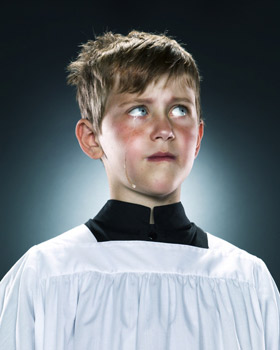
Dictionary definition of holy? Morally and spiritually excellent.
Here's to the ever-irreverent
Jill Greenberg.
© Jill Greenberg
Met
Zandy Mangold's best mate yesterday quite randomly and so got back in touch with this photographer after several years. Apparently he's well into running - just like his parents from what I recall - but he's bust his foot and is
taking drugs. He's a great photographer, high on pills or otherwise, I'm sure. Looks like he's been traveling the world quite a bit, images from the
Sahara and
Gobi deserts and more on his site.
Ultramarathon Sahara Desert, 2009 © Zandy Mangold
